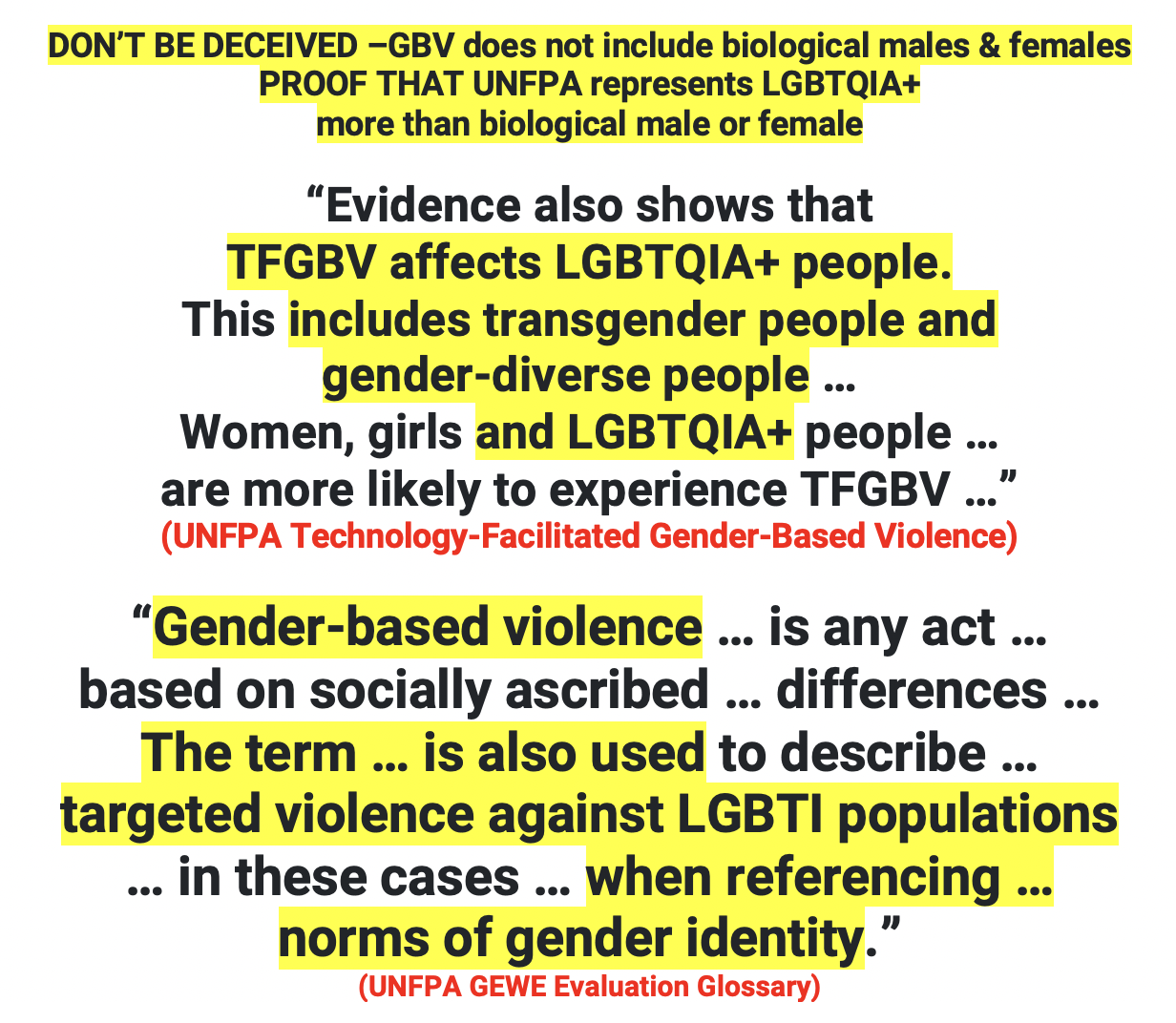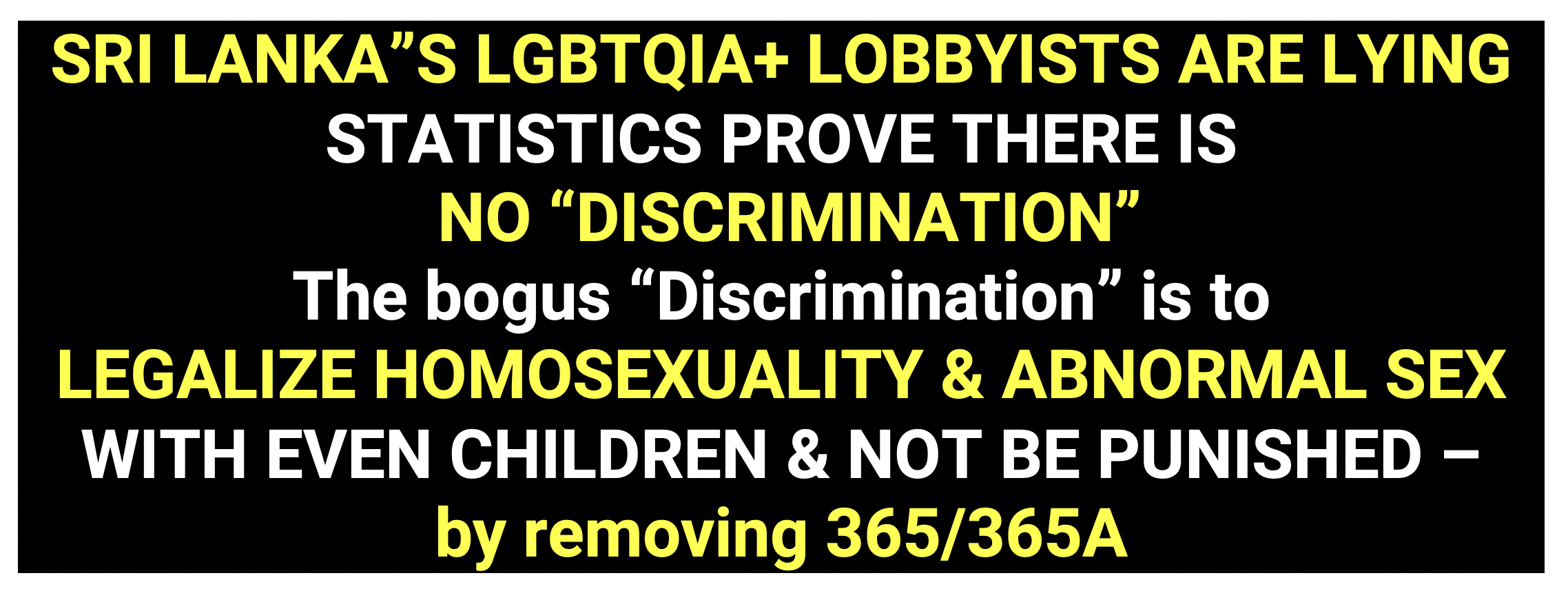UNFPA Sri Lanka: Gender Policy and Hidden LGBTQIA Focus

Despite Sri Lanka facing pressing challenges in health, protection, and social services for its overwhelming majority of biological males and females, UNFPA Sri Lanka’s gender policies and programs prioritize a tiny, hidden population of gender minorities. Disguised under euphemisms like “gender minorities” and “diverse sexual orientations,” this allocation of resources favors a demographic so small that UNFPA itself cannot provide credible population figures, while the needs of the majority remain underserved. Through MoUs, partnerships, and funding agreements with UNDP, DFAT, and others, significant public and international resources are being directed toward a largely invisible group, raising questions about justification, transparency, and public accountability.
- UNFPA’s Policy on Gender in Sri Lanka — Goes beyond Biological Sex
National Policy on Gender Equality & Women’s Empowerment (Sri Lanka, March 2023)
- Launched: 12 March 2023, by Ministry of Women, Child Affairs & Social Empowerment with UNFPA technical support.
- Definition & Coverage: Explicitly mentions gender minoritiesalongside “women” and “men.”
- Commitment: Eliminating discrimination against “women and gender minorities” through legislation, policies, and institutional frameworks.
- Thematic Focus: “Identity and Autonomy,” “Freedom from Gender-based Violence,” etc.; annex lists gender minoritiesand women with non-binary identities.
- Vision / Language: Society where “gender minorities” have equal rights alongside women and men.
- Source:
https://srilanka.unfpa.org/en/publications/national-policy-gender-equality-and-womens-empowerment
https://www.unfpa.org/sites/default/files/2022-11/GEWE_Evaluation_Volume_2_Annexes.pdf
SGBV (Sexual & Gender Based Violence) National Action Plan (2024–2028)
- UNFPA technically involved in multi-sectoral plan development.
- Vision: “a violence-free life for women, men, girls and boys and those with diverse gender identities and sexual orientations.”
- Includes non-binary, transgender, queer persons in protection framework.
- Covers 13 sectors (education, health, justice, transport, etc.) for a “whole-of-government / whole-of-society” response.
- Related Programs: National workshops (Feb 2025), shelter staff training (June 2025), police survivor-centered training (June 2025).
- Sources:
- https://srilanka.unfpa.org/sites/default/files/pub-pdf/2025-01/National%20Action%20Plan%20to%20Address%20on%20SGBV%20ENGLISH%2020241218%20%281%29.pdf
- https://srilanka.unfpa.org/en/news/sri-lanka-advances-efforts-end-gender-based-violence-national-workshop-sgbv-action-plan
- https://srilanka.unfpa.org/en/news/strengthening-survivor-centered-gbv-services-island-wide-shelter-staff-trained-under-national
Rapid Gender Analysis (RGA) — 2022
- Studied impact of 2022 economic crisis on “women and girls including those with diverse sexual orientations and gender identities.”
- Includes gender minorities in needs assessments.
- Publication: 18 April 2023.
- Source: https://srilanka.unfpa.org/en/publications/rapid-gender-analysis-sri-lanka-2022
- Data point: Out of 635 focus group participants, 10 identified as LGBT (RGA full report, p. 44). No national population estimate is provided.
Technology-Facilitated Gender-Based Violence Study — Gender Discrimination Law (2025)
- Defines TF-GBV as violence “on the basis of their gender,” explicitly including LGBTQIA+ persons.
- Source: https://srilanka.unfpa.org/en/publications/gender-discrimination-sri-lanka-law-policy-and-practice
https://www.unfpa.org/sites/default/files/pub-pdf/A%20Framework%20for%20TFGBV%20Programming.pdf
Gender-Responsive Emergency Action Training
- Launched: 15 January 2025
- Objective: Integrates gender-sensitive SRH, GBV prevention, and social inclusion in disaster response.
- Includes gender minorities, not just biological males/females.
- Source: https://srilanka.unfpa.org/en/news/unfpa-sri-lanka-launches-gender-responsive-emergency-action-training-save-lives
- UNFPA Sri Lanka Gender Equality Programs
Centre of Excellence for Gender Equality & Women’s Empowerment (CoE GEWE)
- MOU – 1 Mar 2024
- Objective – Research hub for gender equality, SRH, population
- Target audience – Researchers, policy-makers, students, civil society
- Partners/Funding – UNFPA Sri Lanka, University of Colombo
- Note: Technical & financial support by UNFPA
SGBV Multi-sectoral Action Plan
- Published Jan 2025
- Objective – Prevent & respond to SGBV across sectors
- Target audience – Government ministries, service providers, civil society, survivors
- Partners/Funding – UNFPA, UNDP, 13 ministries
- Note: Includes “those with diverse gender identities”
Gender-Responsive Emergency Action Training
- Jan 2025
- Objective – Integrate SRH, GBV prevention in disaster response
- Target audience – disaster officials, first responders
- Partners/Funding – UNFPA, DFAT Australia
- Note: Gender minorities included
Adolescent Girls Empowerment / Menstrual Health
- Various 2024–2025
- Objective – Break taboos, dignity kits, SRHR education (including LGBTQIA+)
- Target audience – Adolescent girls (including disabilities), teachers, parents
- Partners/Funding – UNFPA, DFAT Australia, volunteers
- Note – Explicitly mentions LGBTQIA+ under SRHR
Youth & Social Cohesion Project
- Ongoing 2024
- Objective – Promote youth leadership,
- Target audience – Youth, schools, interfaith youth groups
- Partners/Funding – UNFPA, Alliance Development Trust, Embassy of Japan
- Note: Funding highlights MoU-supported partnerships
National Refresher Training for Disaster Practitioners
- Sep 2023
- Objective – Gender-equitable disaster response
- Target audience – Disaster officials, volunteers
- Partners/Funding – UNFPA, Govt of Sri Lanka
- Notes – Gender-sensitive training
Observation: Many programs and workshops rely on MoUs, partnerships, and funding agreements (e.g., DFAT, UNDP, Embassy of Japan, ADT).
This demonstrates that resources are being allocated to groups explicitly targeting gender minorities rather than the broader population in need.
- Hidden LGBTQIA Reference / Deceptive Language
| Term | Actual Reference | Comment |
| Gender minorities | LGBTQIA+ persons | Euphemistic; hides explicit LGBTQIA reference |
| Those with diverse sexual orientations & gender identities | LGBTQIA+ | Appears neutral but refers to queer / trans persons |
| Non-binary persons | Transgender / queer | Technical language hides the population served |
| Women, men, girls, boys | Biological sex | Explicit, transparent |
Key Point:
UNFPA uses euphemisms to conceal LGBTQIA beneficiaries while appearing broadly inclusive. This obfuscation hides the true target group and justifies resource allocation toward a very small minority – a figure that even the UNFPA cannot provide
- Analysis / Interpretation
- Inclusive Definition: UNFPA policy treats gender minorities as a core focus.
- Resource Allocation: Funding and MoU-supported programs prioritize gender minorities even though they constitute a tiny fraction of the population(e.g., 10 out of 635 in RGA).
- Disproportionate Attention: Biological males and females, who make up the overwhelming majority and face urgent health, protection, and social issues, are not the exclusive focus.
- Policy Deception: Hidden LGBTQIA references in euphemistic language prevent transparency and public scrutiny.
- Questionable Justification: Demographically, there is no evidence that gender minorities form a large enough populationto warrant this level of prioritization over more numerous and vulnerable populations.
- Funding Implication: Partnerships and MoUs with UNFPA, international agencies, and donors (DFAT, Embassy of Japan, UNDP) mean resources are being allocated to a small, hidden group instead of larger populations with real needs.
- Deduction
- Since at least March 2023, UNFPA Sri Lanka formally recognizes gender minorities (beyond men and women).
- Policies and programs systematically include LGBTQIA+ groups, often disguised under euphemisms like gender minoritiesor diverse sexual orientations.
- Public financial reporting does not clearly separate budgets for gender minorities, yet MoUs, workshops, and program focus indicate significant allocation toward these groups. Why has the Govt not questioned this allocation of funding to groups that these entities cannot even provide numbers for – while even historical police statistics do not justify claims of discrimination by police under penal code.
- Biological males and females, who constitute the overwhelming majority, face urgent SRH, GBV, and disaster-response needs but are not prioritized proportionately. – SRH-GBV is strongly tilted towards LGBTQIA non-existent community rather the SRH-GBV biological violence/discrimination.
- The approach raises a critical question: UNFPA Sri Lanka is consuming time, funding, and resourcesfor a demographically tiny and mostly hidden population, while larger populations with real needs are under-served.
- The use of hidden language for LGBTQIA+ groupsdemonstrates a lack of transparency and a deliberate framing that could mislead policymakers and the public.
UNFPA Sri Lanka’s current policies and programs systematically favor a demographically tiny, hidden LGBTQIA+ population over the real, urgent needs of the majority. Euphemistic language conceals the true focus, while MoU-driven funding channels and workshops direct resources toward this small group.
The Government, policymakers, and the public must question why time, funding, and efforts are consumed by a population that cannot even be reliably quantified, leaving the majority with tangible health, protection, and social challenges underserved. True gender equality should prioritize populations with the largest needs—not an invisible minority hidden behind bureaucratic terminology.
Shenali D Waduge







